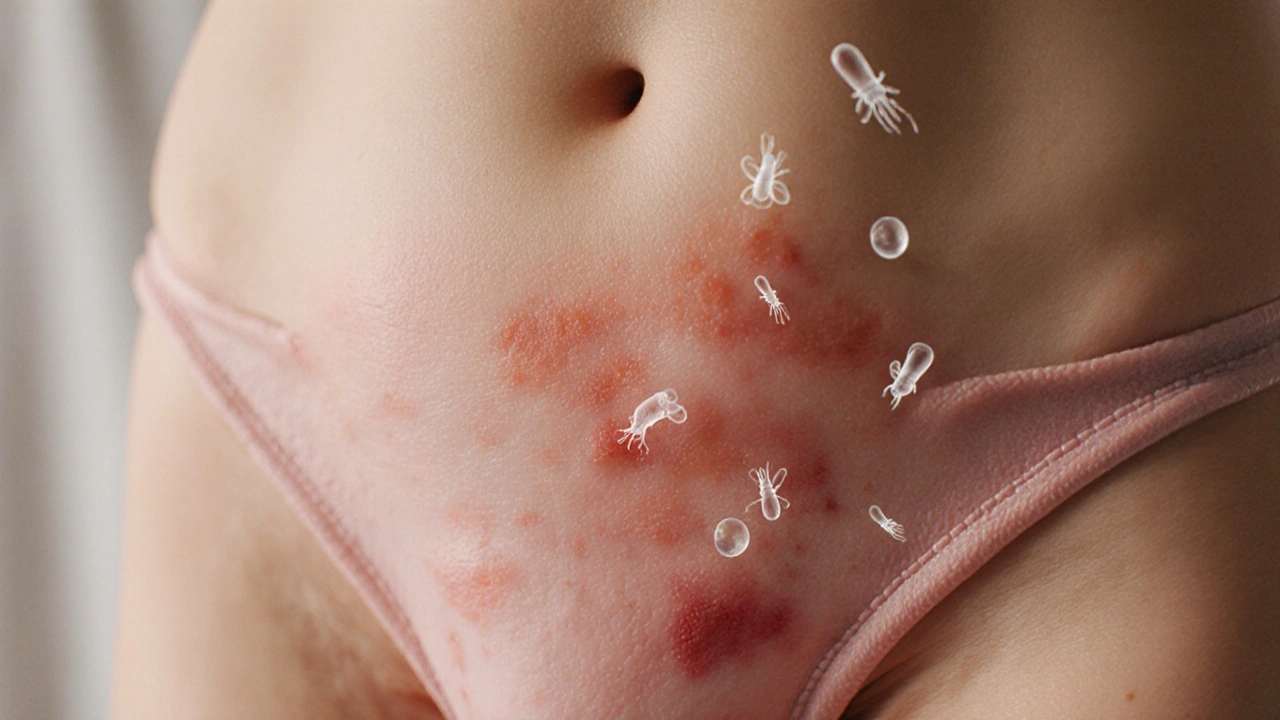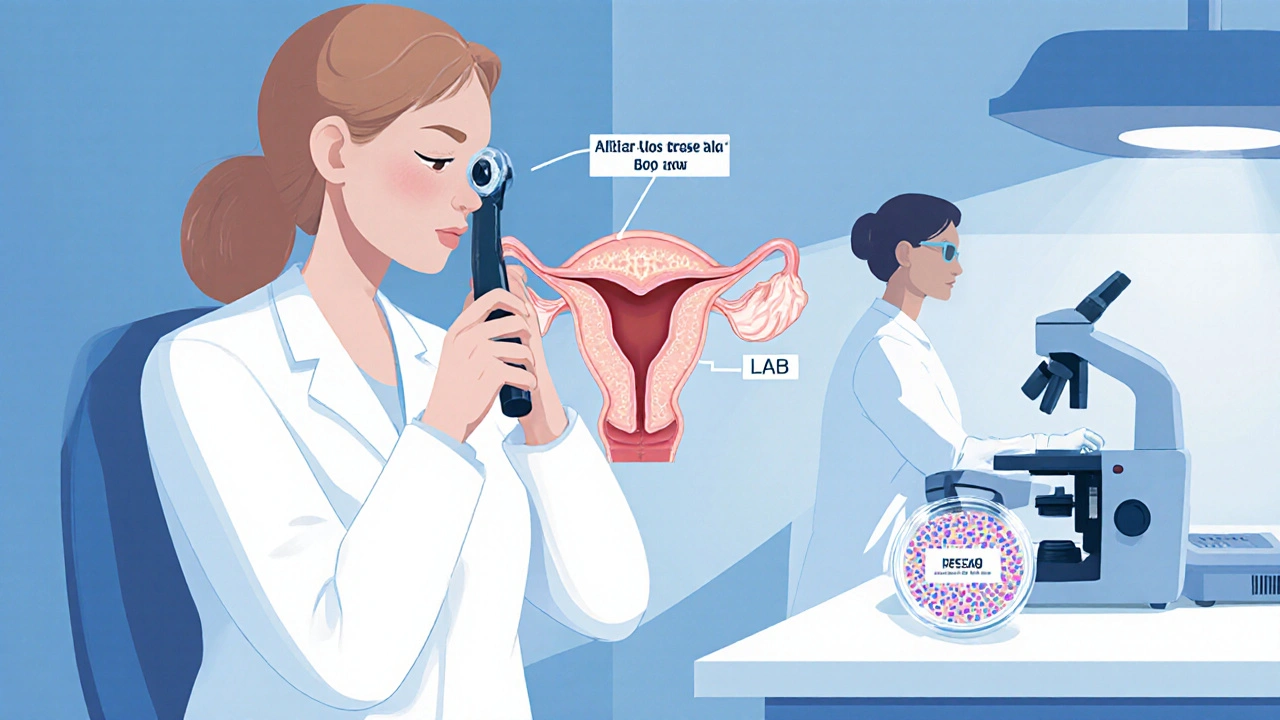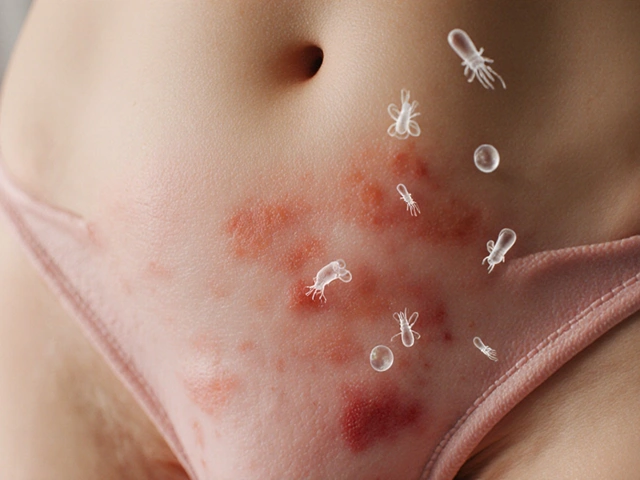
Key Takeaways
- Vaginal irritation often signals an underlying sexually transmitted infection (STI).
- Common STIs that cause irritation include chlamydia, gonorrhea, trichomoniasis, bacterial vaginosis and yeast infection.
- Accurate diagnosis needs a pelvic exam, microscopy and sometimes nucleic‑acid testing.
- Treatment combines antibiotics or antifungals with lifestyle changes to restore vaginal pH.
- Consistent condom use, regular screening and good hygiene are the best prevention tools.
When the intimate area suddenly feels itchy, burning or unusually watery, many people assume it’s just a reaction to soap or a tight garment. While that can happen, vaginal irritation is also a frequent warning sign of a sexually transmitted infection. Understanding why these two issues are tied together can help you act fast, get the right treatment, and avoid long‑term complications.
Vaginal irritation is a broad term that covers discomfort, redness, itching, burning, abnormal discharge, or a feeling of rawness inside the vagina. It’s not a disease itself; it’s a symptom that can stem from hormonal shifts, allergic reactions, hygiene products, or, importantly, infections that spread through sexual contact.
Sexually transmitted infections (STIs) are infections passed primarily through sexual activity. Over 1million new STI cases are diagnosed in the UK each year, and many of those patients first notice an irritation before any other sign appears.
Why STIs Often Trigger Vaginal Irritation
STIs disturb the delicate balance of the vaginal ecosystem. A healthy vagina maintains a slightly acidic pH (around 3.8‑4.5) and hosts lactobacilli that keep harmful bacteria in check. When an infection enters, it can:
- Alter pH, making the environment less acidic.
- Displace beneficial lactobacilli with pathogenic microbes.
- Cause inflammation, which increases blood flow and raises temperature, leading to a burning sensation.
- Produce discharge that irritates the skin, especially if it contains enzymes or toxins.
These changes explain why irritation often appears before more classic STI symptoms like painful urination or pelvic pain.
Common STIs That Cause Vaginal Irritation
| Infection | Typical Irritation Symptoms | Prevalence (UK, 2024) | Diagnostic Test |
|---|---|---|---|
| Chlamydia | Itching, mild burning, watery or mucous discharge | ≈ 180,000 cases per year | NAAT (nucleic‑acid amplification test) on urine or swab |
| Gonorrhea | Burning during urination, thick yellow‑green discharge, soreness | ≈ 30,000 cases per year | Culture or NAAT on swab |
| Trichomoniasis | \nFrothy yellow‑green discharge, itching, odor | ≈ 50,000 cases per year | Microscopy or NAAT |
| Bacterial vaginosis | Fishy odor, thin gray discharge, mild itching | ≈ 300,000 cases per year | Amsel criteria or Nugent score |
| Yeast infection (Candidiasis) | Intense itching, thick white “cottage‑cheese” discharge | ≈ 400,000 cases per year | Microscopy or culture |
Other infections such as human papillomavirus (HPV) and herpes simplex virus (HSV) can also cause irritation, but they are usually accompanied by sores or warts that make the diagnosis clearer.

Spotting the Signs Early
Because irritation is a broad symptom, it helps to note accompanying clues:
- Discharge type: watery, yellow‑green, frothy, or thick white.
- Odor: a fishy smell often points to bacterial vaginosis, while a sour smell may suggest trichomoniasis.
- Pain during sex or urination: more common with chlamydia and gonorrhea.
- Redness or swelling: visible inflammation may indicate an acute infection.
When any of these appear, especially after a new sexual partner or unprotected intercourse, it’s wise to schedule a check‑up within 48‑72hours.
Diagnosis: What to Expect at the Clinic
A typical appointment includes:
- Medical history review - recent sexual activity, contraception use, previous infections.
- Physical exam - visual inspection of the vulva and a speculum exam to view the vagina and cervix.
- Sample collection - swabs from the vaginal walls, cervix, or urine for laboratory testing.
- Lab analysis - most clinics now use rapid NAATs that deliver results within a few hours.
If the initial tests are negative but symptoms persist, a doctor may order a microscopy to look for clue cells (bacterial vaginosis) or yeast buds (candidiasis). In rare cases, a pelvic ultrasound is ordered to rule out more serious complications like pelvic inflammatory disease.
Treatment Strategies Tailored to the Infection
Because each pathogen responds to specific medications, the key is getting an accurate diagnosis first. Below is a quick guide:
- Chlamydia: Single dose of azithromycin 1g PO or 7‑day doxycycline 100mg bid.
- Gonorrhea: Ceftriaxone 500mg IM plus azithromycin 1g PO (dual therapy to cover co‑infection).
- Trichomoniasis: Metronidazole 2g PO single dose or 500mg bid for 7days.
- Bacterial vaginosis: Metronidazole gel 0.75% intravaginal for 5days or oral tinidazole 2g single dose.
- Yeast infection: Fluconazole 150mg PO single dose; topical azoles for recurrent cases.
Partner treatment is crucial. Even if the partner feels fine, untreated infection can be passed back, leading to recurrence. Follow‑up testing 1‑2weeks after therapy confirms clearance.

Preventing Irritation and STIs
Prevention is a mix of smart sexual practices and everyday care:
- Condoms: Use latex or polyurethane condoms consistently; they reduce transmission of chlamydia, gonorrhea, trichomoniasis, and HSV.
- Regular screening: Annual STI tests for sexually active adults, every 3‑6months for high‑risk groups.
- Hygiene: Wash with warm water only, avoid scented soaps, douches, or tight synthetic underwear.
- Probiotics: Lactobacillusrhamnosus GG or L.reuteri daily can help maintain a healthy vaginal microbiome.
- Vaccination: HPV vaccine (Gardasil9) protects against strains that cause genital warts and cervical cancer, indirectly reducing irritation.
If you notice irritation, resist the urge to self‑diagnose with over‑the‑counter creams without a professional opinion-some treatments can worsen an underlying infection.
When to Seek Immediate Care
Call a health professional right away if you experience any of the following:
- Severe pelvic pain or fever.
- Sudden heavy bleeding or spotting after intercourse.
- Large, painful ulcers (possible herpes or syphilis).
- Persistent irritation despite two weeks of home care.
Early intervention prevents complications like pelvic inflammatory disease, infertility, or chronic pain.
Frequently Asked Questions
Can condom use completely eliminate vaginal irritation caused by STIs?
Condoms dramatically lower the risk of most bacterial and viral STIs, which are the main culprits behind irritation. However, they don’t protect against irritants like soaps or allergic reactions, so proper hygiene is still needed.
Is it safe to use over‑the‑counter antifungal creams if I suspect an STI?
Self‑treating without a diagnosis can mask symptoms and allow a bacterial infection to spread. It’s best to get tested first; a doctor can prescribe the right medication if an STI is confirmed.
How long does it take for irritation to clear after treatment?
Most bacterial STIs improve within 3‑5days of starting antibiotics, while yeast infections may linger 1‑2weeks. Persistent irritation after treatment should prompt a follow‑up visit.
Can the HPV vaccine reduce vaginal irritation?
HPV itself rarely causes irritation, but it can lead to warts that are uncomfortable. The vaccine prevents those strains, indirectly lowering the chance of irritation related to wart treatment.
Are home probiotic supplements effective for preventing STI‑related irritation?
Evidence shows daily Lactobacillus strains help maintain a low vaginal pH, which can deter overgrowth of harmful bacteria. They’re a useful adjunct but not a replacement for condoms and regular screening.




Write a comment